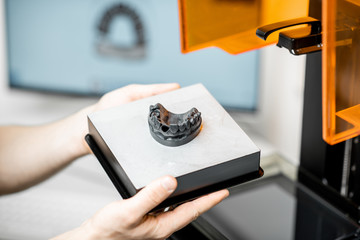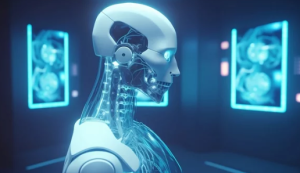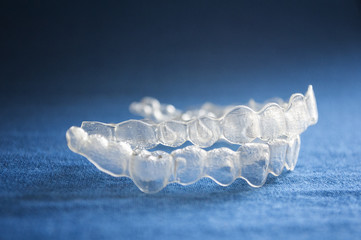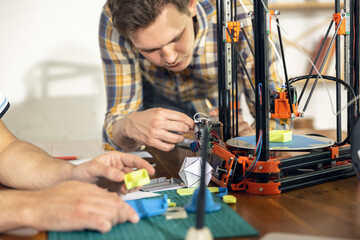From prosthetics and medical supplies to customized products and automotive industry – if you can imagine a product or project, then chances are there will be a way to make it happen using 3D printing.
In this discussion we’ll explore exactly what makes this revolutionary technology so powerful; how far we’ve come over the years; and how anyone can jump into the world of 3D designing with tools accessible from any device.
Get ready to dive into the exciting realm of 3D printing and discover its impact across various industries.
The Impact of 3D Printing in Dental Applications
The use of 3D printing in dentistry eliminates the need to outsource the production of dental models. This technology has made significant advancements in various dental applications, including dental implants, dentures, dental surgical guides, dental education, and dental prosthetics.

Creation of Customized Dental Implants
In the field of dental implants, 3D printing has revolutionized the process by allowing for the creation of customized implants that fit perfectly in a patient’s mouth. This technology enables dentists to create implants with intricate details and precise measurements, ensuring a better fit and improved patient satisfaction.
3D printed dentures have also made a significant impact in dentistry. Traditionally, dentures were made using molds and manual labor, which often led to inconsistencies and discomfort for the patient. With 3D printing, dentures can be customized to fit the patient’s mouth perfectly, resulting in increased comfort and improved functionality.
Creation of 3D Printed Dental Surgical Guides
Furthermore, 3D printed dental surgical guides have become an essential tool in dental surgeries. These guides allow dentists to accurately plan and execute complex procedures, reducing the risk of complications and improving patient outcomes.
Valuable Tool For Dental Training
In dental education, 3D printing has provided a valuable tool for teaching and training future dentists. Students can now have access to realistic dental models that mimic real-life scenarios, allowing for a more hands-on and immersive learning experience.
Creation of Dental Prosthetics
Lastly, 3D printing has also been used to create dental prosthetics such as crowns, bridges, and veneers. With this technology, dentists can produce prosthetics that are highly accurate and aesthetically pleasing, resulting in enhanced patient satisfaction.
Overall, the impact of 3D printing in dental applications has been tremendous, offering improved accuracy, efficiency, and customization in various dental procedures.
Revolutionizing Telemedicine With 3D Printing
Revolutionizing telemedicine, 3D printing technology improves accessibility and efficiency in remote medical diagnosis. With 3D printing in remote healthcare, medical professionals can now utilize 3D printed medical devices for accurate and personalized treatment.

Surgical Planning
The use of 3D printing in surgical planning allows for precise visualization and preparation before procedures. Additionally, 3D printing has shown promise in drug development, enabling the creation of customized medications tailored to individual patients. This advancement in personalized medicine has the potential to revolutionize the way we approach healthcare.
Easy Accessibility of Patients
By utilizing 3D printing technology, healthcare providers can overcome barriers such as distance and limited resources in remote areas. 3D printed medical devices, such as prosthetics and implants, can be easily produced on-site, reducing the need for costly and time-consuming transportation. This not only improves accessibility but also ensures that patients receive timely and appropriate care.
Improved Visualization of Complex Anatomical Structures
Furthermore, 3D printing in surgical planning allows for better visualization of complex anatomical structures, leading to more precise and successful surgeries. Surgeons can now create patient-specific models that accurately replicate the individual’s unique anatomy, allowing for pre-operative planning and practice. This technology enhances surgical outcomes and reduces the risk of complications.
Use In Drug Development
Moreover, 3D printing is revolutionizing the field of drug development. With the ability to create precise dosage forms and personalized medications, patients can receive treatments that are tailored to their specific needs. This not only improves efficacy but also minimizes adverse reactions and side effects.
Enhancing Orthodontic Appliance Production Through 3D Printing
By adopting 3D printing technology, you can greatly enhance the production of orthodontic appliances, allowing for greater precision, customization, and efficiency.

Advanced Customization
3D printing technology enables the creation of orthodontic appliances that are tailored to each individual patient’s needs. The ability to design and manufacture appliances with fine feature detailing ensures a better fit and increased comfort for patients.
Streamlining Production
3D printing eliminates the need for traditional manufacturing processes, such as casting and molding, which can be time-consuming and costly. With 3D printing, orthodontic appliance manufacturing becomes more efficient, as the appliances can be produced in a single step, reducing production time and increasing productivity.
Cost Effectiveness
3D printing reduces production costs in orthodontics by eliminating the need for expensive molds and tooling. It also allows for the use of less material, reducing waste and saving money. Additionally, the ability to produce appliances in-house eliminates outsourcing costs.
Improved Patient Experience
The precision and customization offered by 3D printing technology result in orthodontic appliances that fit better and are more comfortable for patients. This leads to improved treatment outcomes and a better overall patient experience.
Future Advancements
As 3D printing technology continues to evolve, there is potential for further advancements in the field of orthodontics. Innovations such as biocompatible materials and the ability to print complex structures could pave the way for new and innovative orthodontic solutions.
Expanding the Possibilities of 3D Printing in Manufacturing
You can explore new avenues for manufacturing with the expanding possibilities of 3D printing technology. This innovative technology has made significant strides in various industries, including the automotive industry, fashion, food industry, aerospace, and education.

Use In Automotive Industry
In the automotive industry, 3D printing has revolutionized the production process by enabling the creation of complex parts and prototypes with greater efficiency and cost-effectiveness.
Use In Fashion Industry
It has also facilitated customization and rapid prototyping in the fashion industry, allowing designers to bring their creative ideas to life quickly.
Food Industry Applications
The food industry has also embraced 3D printing, enabling the creation of unique and intricate food designs, as well as personalized nutrition.
Aerospace Sector
In the aerospace sector, 3D printing has played a vital role in manufacturing lightweight and durable parts, improving fuel efficiency and performance.
Application In The Education Sector
In the field of education, 3D printing has become an invaluable tool for hands-on learning, enabling students to design and create tangible objects, promoting creativity and problem-solving skills.
Manufacturing Sector
The expanding possibilities of 3D printing technology have opened up new horizons in manufacturing, offering endless opportunities for innovation and advancement in various industries.
The Future of Construction: 3D Printing in Action
In the future, 3D printing technology in construction will bring about significant advancements and transformations in the industry.
3D printed Sustainable Architecture
With 3D printing, architects and designers will have the ability to create sustainable and eco-friendly buildings. The technology allows for the use of recycled materials and efficient designs that minimize waste and energy consumption.
3D Printed Infrastructure
3D printing can revolutionize the construction of infrastructure such as bridges, roads, and tunnels. The technology offers faster and more cost-effective methods for building these structures, reducing construction time and expenses.
3D Printed Homes and Furniture
The construction industry will see a shift towards 3D printed homes and furniture, which offer customizable designs and reduced construction time. This technology can also address housing shortages and provide affordable housing solutions.
3D Printed Construction Materials
3D printing allows for the creation of unique and specialized construction materials. This includes concrete, which can be printed in intricate and complex shapes, as well as other materials like plastic and metal. These materials can be customized to meet specific project requirements.
In the whole, the future of 3D printing in construction holds immense potential for sustainable architecture, efficient infrastructure, and innovative housing solutions. As the technology continues to advance, we can expect to see a revolution in the way we build and design our cities.



